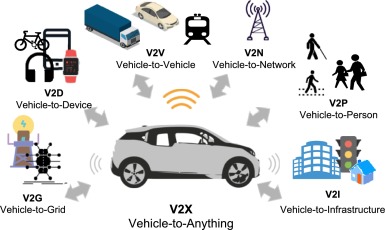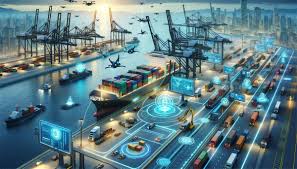The dawn of a new era in transportation is upon us, and it’s being fueled by two groundbreaking innovations: 5G technology and autonomous cars. Imagine vehicles that can communicate with each other, analyze their surroundings in real-time, and navigate our streets without human intervention. Sounds like science fiction? It’s becoming a reality faster than we think.
5G isn’t just another upgrade; it’s a game changer. With lightning-fast data speeds and ultra-reliable connections, the potential for seamless communication between self-driving vehicles is immense. As we delve into this exciting intersection of technology, we’ll explore how 5G is set to transform the way we travel—making it safer, more efficient, and ultimately revolutionizing our daily commutes. Buckle up as we drive into the future!
What is 5G and how does it work?
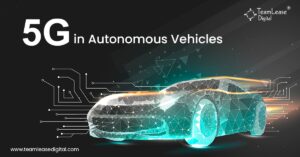 5G is the fifth generation of mobile network technology, designed to enhance connectivity. Unlike its predecessor, 4G, 5G offers significantly faster data speeds and lower latency.
5G is the fifth generation of mobile network technology, designed to enhance connectivity. Unlike its predecessor, 4G, 5G offers significantly faster data speeds and lower latency.
At its core, 5G operates on a new infrastructure that utilizes higher frequency bands. This allows for quicker transmission of data across vast networks. With advanced antennas and small cell technology, it can handle multiple devices simultaneously without compromising performance.
The result? Near-instantaneous communication between devices. This is crucial for applications requiring real-time interactions—think autonomous cars navigating busy streets or smart cities managing traffic flow efficiently.
Moreover, 5G enables massive amounts of data transfer with minimal delays. As more vehicles become autonomous and interconnected, this robust network will be vital in keeping everything running smoothly in our increasingly tech-driven world.
The potential impact of 5G on autonomous cars
5G technology is set to revolutionize the landscape of autonomous vehicles. With its ultra-low latency and high-speed data transfer, real-time communication between cars and infrastructure becomes a reality.
Imagine self-driving cars that can instantly share information about road conditions or traffic signals. This connectivity enhances safety by enabling immediate responses to potential hazards.
Moreover, 5G facilitates vehicle-to-everything (V2X) communication. Autonomous cars will not only talk to each other but also interact with pedestrians and smart city systems.
This interconnectedness can significantly improve traffic management, reducing congestion and travel times. As a result, urban environments may become more efficient and less polluted.
With these advancements in place, we could witness an era where transportation is both safer and smarter than ever before. The possibilities are endless as 5G continues to unfold its potential in the world of autonomous driving.
Advancements in self-driving technology
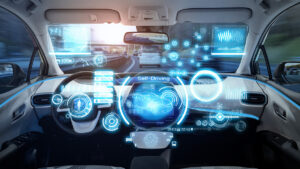 Self-driving technology has made remarkable strides in recent years. Innovations are emerging from both established automakers and tech startups alike.
Self-driving technology has made remarkable strides in recent years. Innovations are emerging from both established automakers and tech startups alike.
At the heart of these advancements is machine learning. Algorithms enable vehicles to interpret vast amounts of data, enhancing their ability to navigate complex environments. This allows cars to make split-second decisions that mimic human drivers.
Sensor technology plays a crucial role too. Lidar, radar, and cameras work together to create a detailed map of the surroundings. These sensors help identify obstacles, pedestrians, and other vital elements on the road.
Connectivity also enhances self-driving systems’ performance. With real-time data exchange between vehicles and infrastructure, navigation becomes more efficient and safe.
As we explore this exciting frontier, it’s clear that every leap forward brings us closer to fully autonomous vehicles on our roads. The future promises even greater integration with smart city initiatives as well.
Benefits of using 5G in autonomous cars
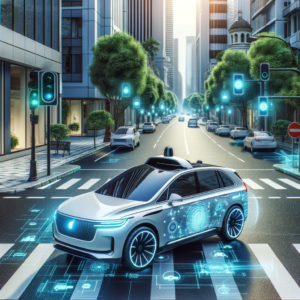 5G technology brings unprecedented benefits to autonomous cars. The ultra-fast speeds allow vehicles to communicate with each other and surrounding infrastructure in real time. This connectivity enhances safety by enabling instant decision-making.
5G technology brings unprecedented benefits to autonomous cars. The ultra-fast speeds allow vehicles to communicate with each other and surrounding infrastructure in real time. This connectivity enhances safety by enabling instant decision-making.
With 5G, data transmission is nearly instantaneous. Cars can share critical information about road conditions, traffic patterns, or obstacles ahead without delay. This creates a smarter driving experience that significantly reduces accident risks.
The increased bandwidth of 5G supports advanced sensor systems within self-driving cars. High-definition maps and streaming video feeds can be processed seamlessly, providing an accurate view of the environment.
Moreover, 5G allows for vehicle-to-everything (V2X) communication. Autonomous vehicles can interact not just with one another but also with traffic signals and pedestrian devices, optimizing traffic flow and minimizing congestion.
This level of integration fosters a connected ecosystem where all components work harmoniously together for safer transportation experiences.
Challenges and concerns surrounding the integration of 5G and self-driving cars
The integration of 5G technology with autonomous cars is not without its challenges. One major concern revolves around security. As vehicles become more connected, they also become more vulnerable to cyber threats. Hackers could potentially take control of a self-driving car or access sensitive data.
Another challenge lies in infrastructure readiness. Not all areas have the necessary 5G coverage for seamless operation. Rural regions may lag behind urban environments, raising questions about equitable access.
Latency issues can also pose risks. Although 5G promises faster response times, any delay in communication between vehicles and networks could lead to accidents.
Regulatory hurdles add another layer of complexity. Governments need to establish guidelines that ensure safety while fostering innovation in this rapidly evolving field.
Public perception plays a critical role too; many people are still skeptical about trusting machines to drive them safely on roads filled with human drivers and unpredictable conditions.
Current implementation and future possibilities
Cities around the world are starting to integrate 5G technology into their infrastructure. Smart traffic lights and connected road sensors are becoming commonplace. These innovations help streamline vehicle movement, particularly for autonomous cars.
Moreover, car manufacturers are actively testing self-driving vehicles in urban environments equipped with 5G networks. This allows real-time data transfer crucial for decision-making on the road.
Looking ahead, we can expect more seamless communication between vehicles and surrounding systems. Imagine a future where your car predicts traffic jams before they happen or adjusts its route based on live weather updates.
As partnerships between tech companies and automakers grow stronger, developments will accelerate. The vision of fully autonomous fleets operating efficiently in smart cities is not far off; it’s merely a matter of time before these concepts become reality.
Conclusion: The exciting future of transportation with 5G and autonomous cars
The landscape of transportation is on the verge of a monumental shift. With 5G technology paving the way for unprecedented connectivity, autonomous cars are set to redefine how we travel. Imagine vehicles that can communicate with each other in real-time, adjusting their routes and speeds based on traffic conditions, weather updates, and even emergency situations.
The integration of 5G into self-driving technology offers immense potential. It enhances safety features by enabling quicker response times and more accurate data sharing between vehicles and infrastructure. As advancements continue in both telecom networks and automotive engineering, we move closer to a future where road congestion decreases significantly while travel becomes seamless.
However, challenges remain—regulatory hurdles, cybersecurity threats, and public acceptance must be addressed as we navigate this new frontier. The collaboration between tech companies and automotive manufacturers will play a crucial role in overcoming these obstacles.
As investment pours into research and development for 5G applications within autonomous driving systems, the possibilities seem endless. Smart cities equipped with advanced communication infrastructures could further enhance these innovations.
Transportation is not just about getting from point A to B anymore; it’s evolving into an interconnected ecosystem driven by technology that promises efficiency like never before. The merging paths of 5G and autonomous cars signify more than just progress—they represent a thrilling leap forward into the future of mobility.

